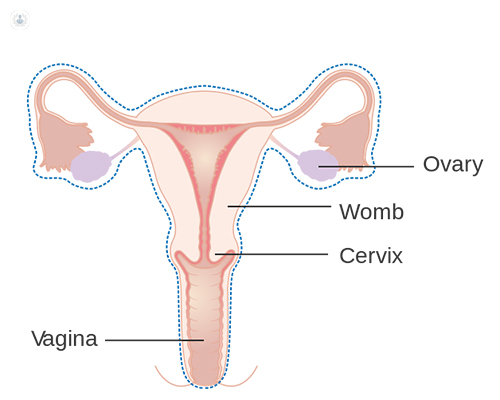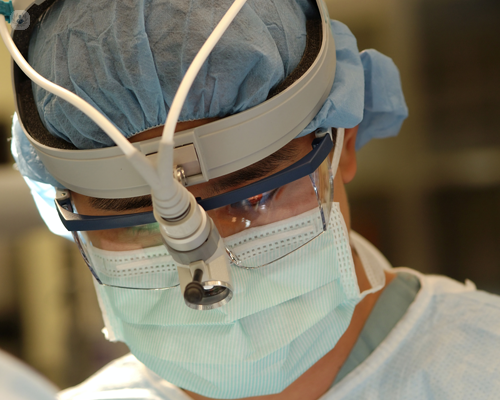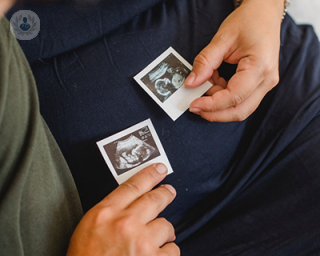Fertility-sparing surgery
Mr Nick Elkington - Obstetrics & gynaecology
Created on: 04-17-2020
Updated on: 06-30-2023
Edited by: Karolyn Judge
What is fertility-sparing surgery?
Fertility-sparing surgery preserves the female body’s ability to conceive and is usually carried out on cancer patients where this type of surgery is deemed the best option for their case.

Why is fertility-sparing surgery done?
Fertility can be damaged by a single cancer therapy session, so sometimes surgery to avoid infertility is carried out. The type of surgery depends on the type of cancer.
What does fertility-sparing surgery involve?
Fertility sparing surgery for ovarian cancer
Oophorectomy
Fertility-sparing surgery for women suffering from ovarian cancer is often an option if they would like have children at a later date and if they have early cancer in only one ovary. During this procedure, gynaecologists often remove the cancerous ovary connected to the fallopian tube. A sample of the surface of the uterus is also taken in a procedure called curettage and dilation, to ensure no cancer remains there.
The uterus and noncancerous ovary are left in place to preserve fertility and this is done using minimally invasive surgery to perform this procedure whenever possible.
Ovarian transposition (oophoropexy)
In the case where the patient will need a scan by the pelvic area, the ovaries are often surgically repositioned in the pelvis so that radiation doesn’t affect them. After the treatment, the ovaries may need to be repositioned again to conceive.
Fertility sparing surgery for cervical cancer
Cervical conization
To treat early-stage cervical cancer, a cancerous area/a large-cone shaped section of the cervix, is removed (cervical conization). The remainder of the cervix and the uterus are preserved.
Alternatively, a surgeon can completely or partially remove the cervix and the connective tissues next to the uterus, this is called a radical trachelectomy.
Radical Trachelectomy
A radical trachelectomy is a surgical procedure used to remove cancer from the cervix. It involves removing the upper third of the vagina and the cervix. The tissue surrounding the lower end of the uterus (parametrial tissue) and the pelvic lymph nodes are removed. A general anaesthetic is used, which means that you will be asleep during the entire operation.
This surgery is performed on women with early-stage cervical cancer, who wish to preserve their ability to become pregnant in the future.

How do you prepare for fertility-sparing surgery?
When preparing for any fertility-sparing surgery, your medical and surgical history will be reviewed. Tests, including an electrocardiogram (ECG) to check your heart rhythm, blood tests, X-ray, and any other tests necessary to plan your care.
In the case of an oophorectomy for ovarian cancer, gynaecological oncologists need to confirm that the cancer has not spread beyond one ovary.
For a radical trachelectomy surgery, surgeons check the cervix and inside the bladder is examined whilst the patient is asleep under general anaesthetic and an MRI scan is also arranged to determine whether the patient can have the radical trachelectomy or not. Investigations are reviewed by a team of senior doctors to decide.
What's involved in aftercare for fertility-sparing surgery?
After fertility-sparing surgery, you will be asked not to lift anything heavy afterwards, strenuous activity should be avoided too. You shouldn’t put anything into your vagina or have vaginal intercourse for four weeks or until your doctor tells you it’s okay.
You may not be able to drive for up to four weeks, depending on the surgery. Especially if you’re taking prescription pain medications. Rest will be necessary for recovery.
What are the alternatives to fertility-sparing surgery?
Less invasive procedures include:
Embryo cryopreservation
This procedure involves harvesting eggs, fertilising them and freezing them so they can be implanted in the female patient at a later date. Studies show that embryos can survive the freezing and thawing process for up to 90 per cent of the time.
Egg freezing (oocyte cryopreservation)
In this procedure, unfertilised eggs are harvested and frozen. Human eggs don't survive freezing as well as human embryos.
Radiation shielding
This involves lead shields that are placed over the ovaries to reduce the amount of radiation exposure they receive.



